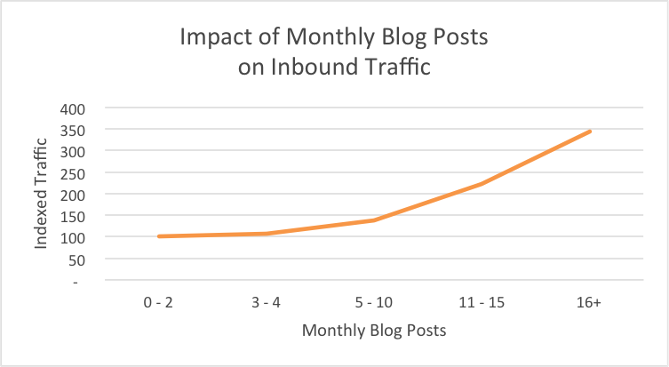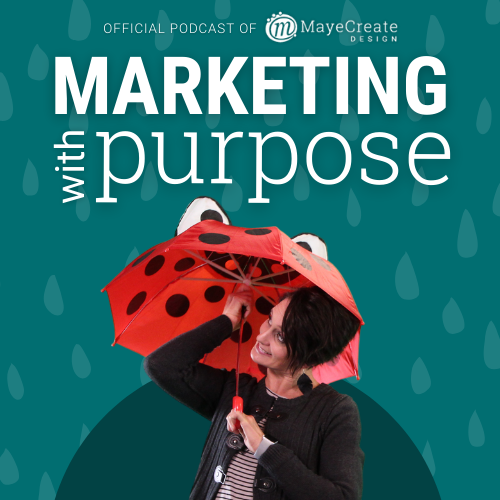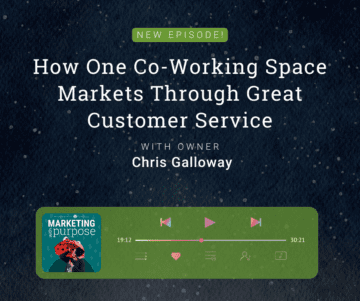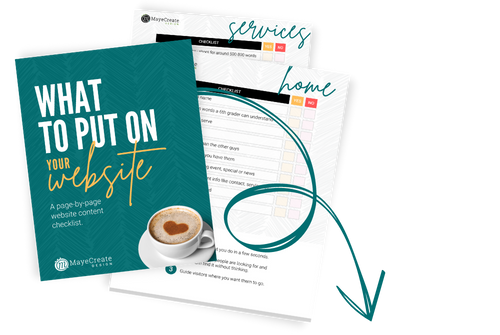How to Start a Business Blog: Our 5-Step Process
November 1, 2017
CONSUME CREATIVELY
This content is available in:
This content is available in:
TEXT
 So you’re starting a business blog, huh? If so, well, I commend you. It’s a smart online marketing tactic for many reasons (some of which I’ll highlight in just a bit). Taking on the task can seem daunting, given blogging is a long-term “marathon” approach for building rapport with your online prospects rather than a “sprint” to generate leads. It’s not an overly complicated process, though. It’s just one that takes some forethought, planning, and discipline.
So you’re starting a business blog, huh? If so, well, I commend you. It’s a smart online marketing tactic for many reasons (some of which I’ll highlight in just a bit). Taking on the task can seem daunting, given blogging is a long-term “marathon” approach for building rapport with your online prospects rather than a “sprint” to generate leads. It’s not an overly complicated process, though. It’s just one that takes some forethought, planning, and discipline.
We recently came across WebsiteSetup’s post and infographic covering the same topic and were inspired to share our process with you. While their process is outlined in 4 steps, ours adds a step at the beginning to outline your marketing goals but otherwise we agree with their process and logic.
Alright, let’s get to it so you can launch your company’s blog and take your online presence to soaring new heights!
5 Steps to Starting Your Business Blog
A nice little disclaimer before we get started: by taking a thorough, well-thought-out approach to Step 1, you’ll be lining yourself up beautifully to knock out Steps 2 through 5. So yeah don’t skip Step 1, that’s what we’re sayin’.
That said, let’s get on with it!
[cta_right id=”28″]
1. Outline your marketing goals.
Here’s where you take some time and really hammer out what you’d like to accomplish by blogging:
- Do you want to keep your clients informed of business news and updates?
- Are you looking to become an expert thought leader in your industry and build credibility with your online audience?
- Are you trying to generate leads for your business?
Whatever your goal, it’s important to understand a couple of things about blogging:
1. Blogging is a traffic game.
Blogging on your website brings more website visitors. (We’ll touch on how a little later…Hint: Doors).
Say your goal is to bring in new business or to earn advertising revenue but you don’t have many website visitors. Starting a blog won’t get you billions of visitors immediately. You may need to harness the power of online advertising for that.
BUT, if you’re in it for the long haul blogging regularly will increase traffic to your site over time, which eventually will generate more leads for you and gain you new business or additional revenue without paying for advertisements.
2. You’ve got to tell people about your blog.
Regardless of your goals, you can’t just throw up some blog posts on your website, close your eyes, open your arms and wait for the leads to land in your lap. You’ve got to tell people you’re doing it.
We’ve found coupling our blogging with email marketing is an extremely effective way to get the word out about our new posts. And when you throw in automation, all we have to say is WATCH OUT WORLD. Oh, and of course social media… Use that, too.
2. Set up your blogging platform.
There are a number of options out there for where to host your blog, but as a business, it’s ideal to house your blog right on your website. Why? One word: mojo.
Mojo, Part 1: Duh
Yeah, I said it: DUH. Of course you want to put your blog on your website! You want your readers to not only soak in your undeniable wisdom but also check out the rest of your website to learn all about the awesome stuff you do!
And then there’s the whole SEO thing…
Mojo, Part 2: Improved Onsite SEO
Without launching into a long-winded explanation of search engine optimization, what it is and how to achieve it, blogging is an excellent practice for organically improving SEO on your website. Basically, blogging helps you rank for more keywords, and that’s what SEO is all about. Blog content enables you to be conversational on your website and use some of the longer phrases your prospects and clients use when they search online for topics related to your industry. If your blog lives outside your website, you’re building all that good SEO mojo for the blog, not for your website. Stating the obvious here, but… that’s bad. You want people to go to your site (and if you can’t remember why, refer back to ‘Mojo Part 1: Duh’ above). It all has to live under one roof to harness in all the goodness a blog can build.
Mojo, Part 3: Doors, Doors, Doors
Each blog post you publish is jam-packed full of the relevant keywords we just talked about, right? And through the use of these terms within your posts, you can pull in visitors who are searching online for the topics, products and/or services you’re writing about.
Picking up what I’m putting down? Great. Read on…
Once published, your blog posts as the same thing as pages on your site, each with their own unique URL. The more content you post, the more pages on your site that could end up in your prospects’ search results. When you think of each page as a door into your website, it becomes easy to understand why more is better when it comes to blogging. More doors = more visitors. And what does more visitors mean? More opportunities to generate leads… And with 47% of buyers viewing 3-5 pieces of content before engaging with a sales rep, these leads are heating up, meaning more closed business.
3. Decide what you’re going to write about.
Alright, so now you get why blogging within your website is a significant part of achieving your online marketing goals.
Now, what will you write about? When working through the answer to this question, first know: your blog is not about you. It’s about reaching the people you want to work with. So think about what they want to know and where they are in the buying cycle.
Secondly, write to each buyers specific needs or concerns, when you try to reach everyone through your writing, you’ll reach no one. Some of your readers might be at the very bottom of the sales funnel in the early research phase while others are honing in on key information to finalize their buying decision.
This is your opportunity to meet your target markets where they are by explaining things to prospects in each phase of the buying cycle. Create buyer personas for each target market you’re after to help you outline who you’re talking to and what they want or need to know. Avoid generalizing; the more detailed you can get the better.
If you get stuck, you can check out the plethora of blog posts on our site further illustrating this concept.
4. Establish a process for posting.
It’s time to consider the “how” part of carrying out your blogging plan.
Who will be writing the blog posts?
If you’re anything like me, you (A) love to hear yourself talk, (B) consider yourself quite capable of communicating effectively through writing, and (C) well, just like to have control over everything. That said, you’re likely going into this blogging plan with the mentality that you’re just going to DO. IT. ALL. And I like that, I do.
But stop it. Be real with yourself. It’s okay, real is good.
Think about your current role and how much is on your plate before self-appointing yourself as the sole author on your blog. Ask yourself if you really have the time to research, write, edit and publish. If you do, well then by all means, blog away!
If your reality check leads you to conclude you really don’t have time to write, consider any skilled writers or communicators on your staff or hiring an agency, intern or part-timer to write for you. You can even invite guest writers to develop some content for your blog to fill in scheduling gaps as needed.
How long will it take to write each post?
Whoever’s writing for your blog and however long you want your posts to be, make sure there’s enough time on their calendar to get it done. More on that in Step 5.
It personally takes me anywhere from 6 to 9 hours to research, write, revise, re-revise, revise again, find or create graphics as needed, publish and market blog posts. (Note: These are often pretty meaty posts. If you’re writing 500 word posts, it may take you less time.)
What’s your proofing process?
I’ve found these questions really helpful in my blogging experience for knowing how to begin answering this question:
- Do you need to let your first draft breathe for a day or so before revising it? (Cause I do.)
- Who will review it and make suggestions? Do they have time to do this?
- Where will you get your images? Is that something you want your writer to do when drafting the post or do you want someone else handling that?
- Who’s going to publish it to the website? Does your writer know your website platform well enough to take care of that themselves?
From here, you can map out your internal process for getting well-written and -formatted posts out the door on time.
5. Determine how often you want to publish to your blog.
Knowing how often to publish depends mainly on your marketing goals and your capabilities.
Reality Checkpoint #2: Remember when we talked about how much time you or your writer(s) have to blog? If you don’t have much time, it wouldn’t make sense to plan for a ton of posts a month. Conversely, hiring someone whose sole purpose is to blog, publishing frequently may be do-able.
On One Hand: Marketing Goals
With blogging, more truly is better. Because to achieve certain marketing goals, you have to publish content often enough to gain the website traffic you want over time.
Essentially, it’s an exponential correlation between post frequency and increased traffic. HubSpot’s chart illustrates this concept really well. As you can see below, the more often you post each month, the more traffic you’ll see to your website:
This goes back to my earlier question about generating leads and how fast you want them. Overall, companies publishing 16 or more posts per month got almost 3.5 times more traffic than companies posting 0 to 4 times per month.
This isn’t to say you have to publish 16 or more posts per month to accomplish your goal of increasing traffic to your site. It means you’ll reach your traffic goals exponentially faster than companies posting only up to 4 times a month. So how often to post depends on whatever your goal is for how much you’d like traffic to increase and how quickly you’d like to see it come in.
The MayeCreate Experience
When we made the decision to start blogging, we had a steady flow of traffic to our site, but we wanted more. We started by publishing as many as 16 blog posts per month, which caused our traffic to spike dramatically.
Fast forward to now, we have over 20,000 website sessions per month with many of our older posts still generating traffic. So now, we focus more on the post quality versus quantity and develop posts that will hold weight over time to continue pulling in website visitors.
On the Other Hand: Time Limitations
Regardless of who’s writing your posts, you’ll need to determine how much time you’re able to carve out of your company schedule to research and write based on how quickly you’d like to increase traffic to your site.
If you’re looking to publish a minimum of 16 posts, you just have to make sure you have the manpower and efficiency in place to pull that off. If you’re okay with a slower build-up of traffic, that gives you more leeway with scheduling. It’s really based on the marketing goals we talked about above.
You are not alone. (I am here with you.)
Yeah, I like to reference song titles and lyrics a lot, I realize. That’s because everything anyone has ever wanted to say has somehow been written in song format by now, am I right?
My point (and Michael Jackson’s) is you are not alone. And we are here…well, not so much as with you but for you.
Here are some resources we use at MayeCreate to help get you chugging away on the blog train:
This worksheet walks you through your goals, timelines, audiences, your communication style and more and is great for helping you wrap your mind around what it means to write for the web.
The handout also enables you to see how your blogging content can be reused and recycled for your online marketing mix.
This fairly in-depth handout includes a warm-up buyer persona and blog campaign planning activity for establishing an audience, generating post ideas and executing an offering and call-to-action using what you’ve written.
As always, you know where we are if you have any questions!
Who Manifested This Madness?

This fabulous human, that's who.
Monica Maye Pitts
Monica is the creative force and founder of MayeCreate. She has a Bachelor of Science in Agriculture with an emphasis in Economics, Education and Plant Science from the University of Missouri. Monica possesses a rare combination of design savvy and technological know-how. Her clients know this quite well. Her passion for making friends and helping businesses grow gives her the skills she needs to make sure that each client, or friend, gets the attention and service he or she deserves.







